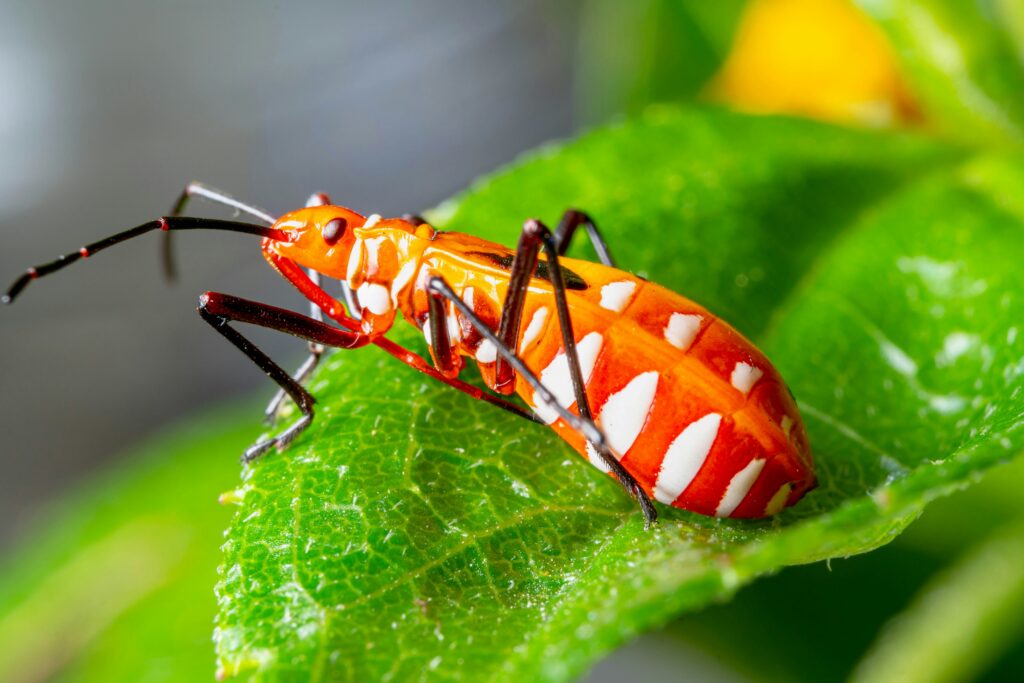In the intricate dance of nature’s ecosystem, predatory insects serve as crucial biological control agents, helping maintain ecological balance by keeping pest populations in check. These beneficial hunters are nature’s own pest management system, often eliminating the need for chemical interventions in gardens and agricultural settings. From swift aerial hunters to stealthy ground predators, these insects employ fascinating hunting techniques and specialized adaptations to capture their prey. Understanding these natural pest controllers not only helps us appreciate their ecological importance but also allows us to harness their abilities in sustainable pest management strategies. Let’s explore the fascinating world of predatory insects that silently work to protect our plants and crops from destructive pests.
Ladybugs: The Spotted Aphid Hunters

Ladybugs, or lady beetles, are perhaps the most recognizable beneficial predators in gardens worldwide, with their distinctive spotted appearance making them beloved by gardeners and children alike. These voracious hunters can consume up to 50 aphids per day, with some species specializing in scale insects and mites that damage plants. During their lifetime, a single ladybug might devour more than 5,000 aphids, making them incredibly efficient natural pest controllers. Both adults and larvae are predatory, though the alligator-like larvae often consume even more pests than their adult counterparts, despite their less charming appearance. Many commercial growers now release ladybugs as part of integrated pest management programs, recognizing their significant impact on reducing aphid infestations without chemical interventions.
Praying Mantids: Patient Ambush Predators
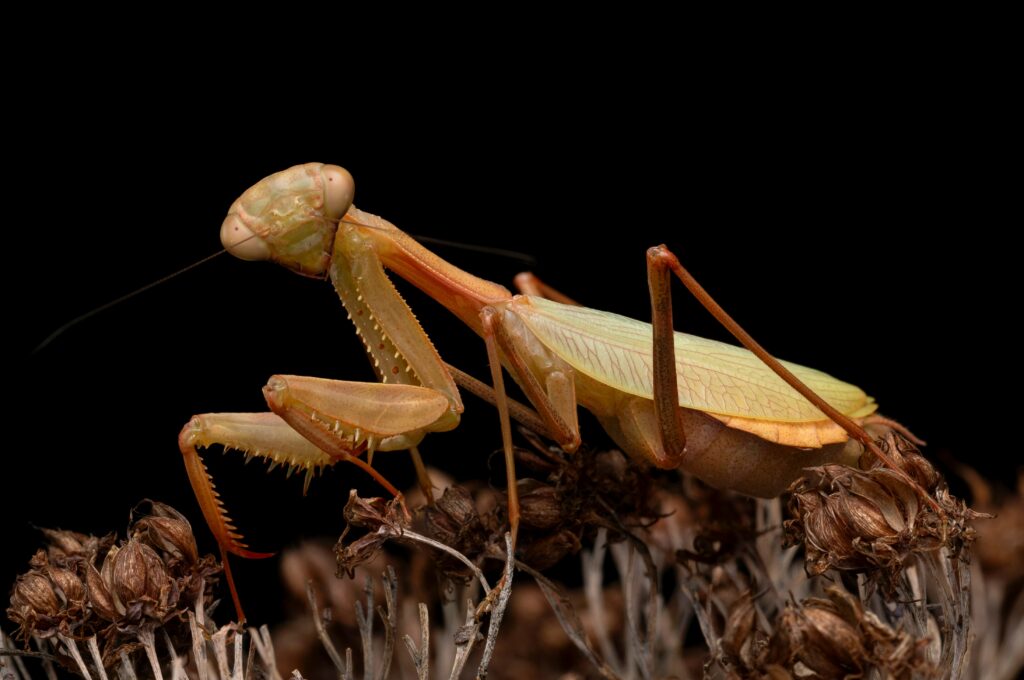
Praying mantids stand out as some of nature’s most fascinating predatory insects, with their distinctive prayer-like stance and swiveling head that can rotate 180 degrees to track prey. These patient hunters employ an ambush strategy, remaining motionless until unsuspecting insects wander within striking distance, then capturing prey with a lightning-fast strike of their powerful, spined front legs. Their diet is impressively diverse, ranging from mosquitoes and flies to larger prey like moths, grasshoppers, and even small vertebrates like hummingbirds in some larger species. Praying mantids are generalist predators, meaning they don’t discriminate between beneficial and pest insects, making their role in pest management more complex than some other predatory insects. Despite their occasionally indiscriminate hunting, mantids remain valuable garden allies, particularly in areas with high pest insect populations.
Green Lacewings: Aphid Lions on the Prowl
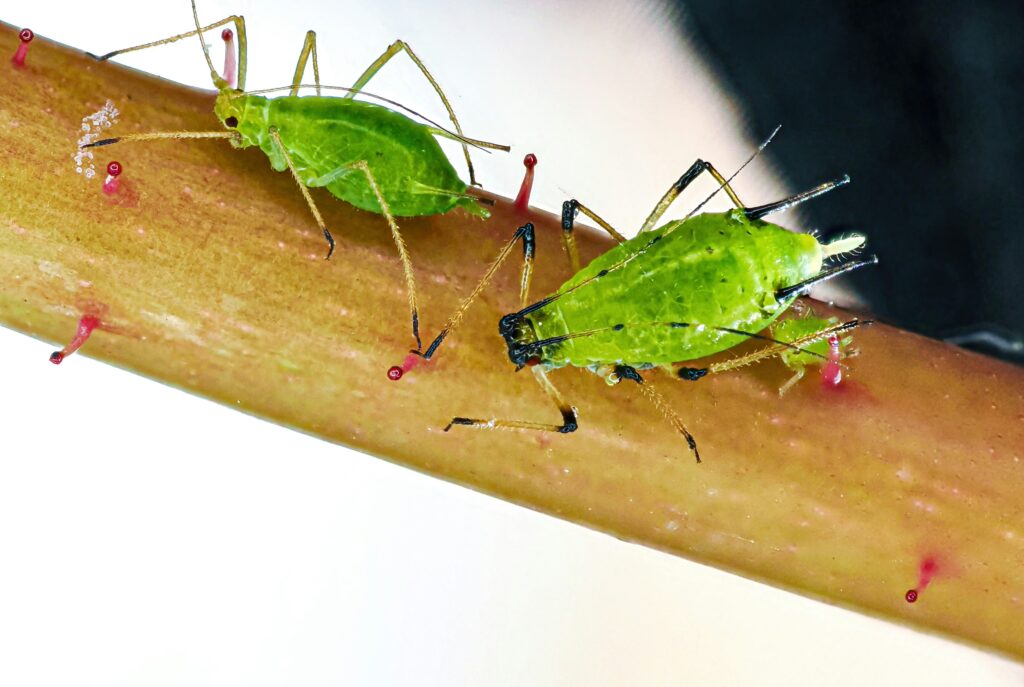
Green lacewings are delicate, beautiful insects with transparent, lace-like wings and bright golden eyes that belie their predatory nature. While the adults of most species feed primarily on nectar, pollen, and honeydew, it’s their larvae—aptly nicknamed “aphid lions”—that are voracious predators. These larvae possess curved, hollow mandibles that inject digestive enzymes into prey and then suck out the liquefied contents, consuming up to 200 aphids or other small insects weekly. Beyond aphids, lacewing larvae also prey on mealybugs, whiteflies, spider mites, and various insect eggs, making them versatile pest controllers. Commercial suppliers now offer lacewing eggs for release in gardens and greenhouses, as these beneficial insects are particularly valuable because they can be effective in controlling pests even when prey populations are relatively low. Their ability to seek out prey actively rather than waiting for high infestations makes lacewings excellent early-intervention predators.
Ground Beetles: Nocturnal Hunters of the Soil

Ground beetles comprise one of the largest families of beetles, with over 40,000 species worldwide that serve as important soil-dwelling predators. These primarily nocturnal hunters emerge after dark to patrol the soil surface, hunting for slugs, snails, cutworms, root maggots, and other ground-dwelling pest insects and their larvae. Most ground beetles are equipped with powerful mandibles and long legs that allow them to move quickly across the soil to capture prey. Their dark, often metallic coloration and flattened bodies are adaptations that help them hide under rocks, logs, and leaf litter during daylight hours. Gardeners can support ground beetle populations by minimizing soil disturbance, maintaining mulch layers, and creating beetle banks—raised strips of perennial grasses that provide year-round habitat for these beneficial predators.
Assassin Bugs: Stealthy Killers with Lethal Injections

Assassin bugs earn their dramatic name through their sophisticated hunting technique, which involves stalking their prey before stabbing them with a curved, piercing proboscis that delivers paralyzing saliva and digestive enzymes. These efficient predators come in various sizes and colors, with the most common garden species being the inch-long, elongated insects with distinct narrow heads and visible “necks.” Their diverse diet includes many significant agricultural pests such as caterpillars, Mexican bean beetles, cucumber beetles, and even larger prey like hornworms. Gardeners should handle assassin bugs with care, as their defensive bite can be painful to humans, though they generally only bite when threatened or mishandled. Certain species, like the wheel bug (with its distinctive cog-like crest), are particularly valued in organic agriculture for their ability to control multiple pest species throughout the growing season.
Dragonflies and Damselflies: Aerial Mosquito Controllers

Dragonflies and their more delicate relatives, damselflies, are among the most efficient aerial predators in the insect world, with a hunting success rate of about 95% that outperforms many larger predators. These ancient insects, which have existed for over 300 million years, are particularly valuable for controlling mosquito populations, with a single dragonfly capable of consuming hundreds of mosquitoes daily. Both the aquatic nymphs and aerial adults are predatory, with the nymphs feeding on mosquito larvae, small fish, and other aquatic organisms before emerging as the familiar winged adults. Dragonflies catch their prey on the wing using their spiny legs, which form a basket-like trap to capture insects in mid-air with remarkable precision. Creating water features in gardens and maintaining clean, fish-free ponds can help support dragonfly populations by providing breeding habitat for these beneficial mosquito controllers.
Spiders: Web-Weaving Pest Catchers

While technically arachnids rather than insects, spiders deserve mention as they are among the most abundant and effective predators in gardens, consuming vast quantities of pest insects annually. Different spider species employ various hunting strategies, from the familiar orb-weavers that construct elaborate spiral webs to catch flying insects, to wolf spiders that actively hunt prey on the ground without using webs. Research suggests that spiders collectively consume more insect biomass than birds or bats, with estimates that the global spider community consumes between 400-800 million tons of prey annually. Their generalist feeding habits mean they target a wide range of garden pests, including flies, mosquitoes, aphids, and various caterpillars that damage crops. Contrary to common misconceptions, the vast majority of spiders are harmless to humans while providing substantial pest control benefits in gardens and agricultural settings.
Hover Flies: Pollinators and Predators in One
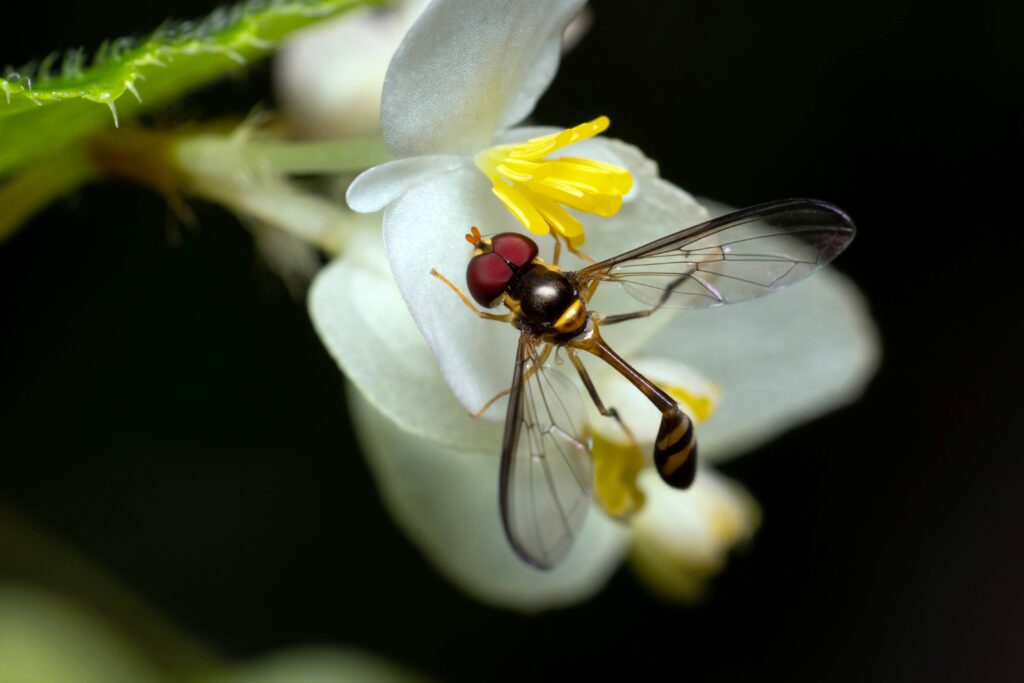
Hover flies (also called syrphid flies) represent a remarkable dual benefit in gardens, as the adults serve as important pollinators while their larvae function as effective aphid predators. These flies are often mistaken for bees or wasps due to their yellow and black striped patterns, though they lack stingers and are completely harmless to humans. The maggot-like larvae of hover flies can consume 400-500 aphids during their development, systematically moving along plant stems and leaves to hunt their prey. Beyond aphids, some hover fly species’ larvae also feed on scale insects, thrips, and caterpillars, making them versatile garden allies. Gardeners can attract adult hover flies by planting shallow-flowered plants like alyssum, cosmos, and herbs that allow these short-tongued insects to access nectar easily, thus encouraging them to lay eggs near aphid colonies.
Predatory Wasps: Specialized Pest Parasitizers
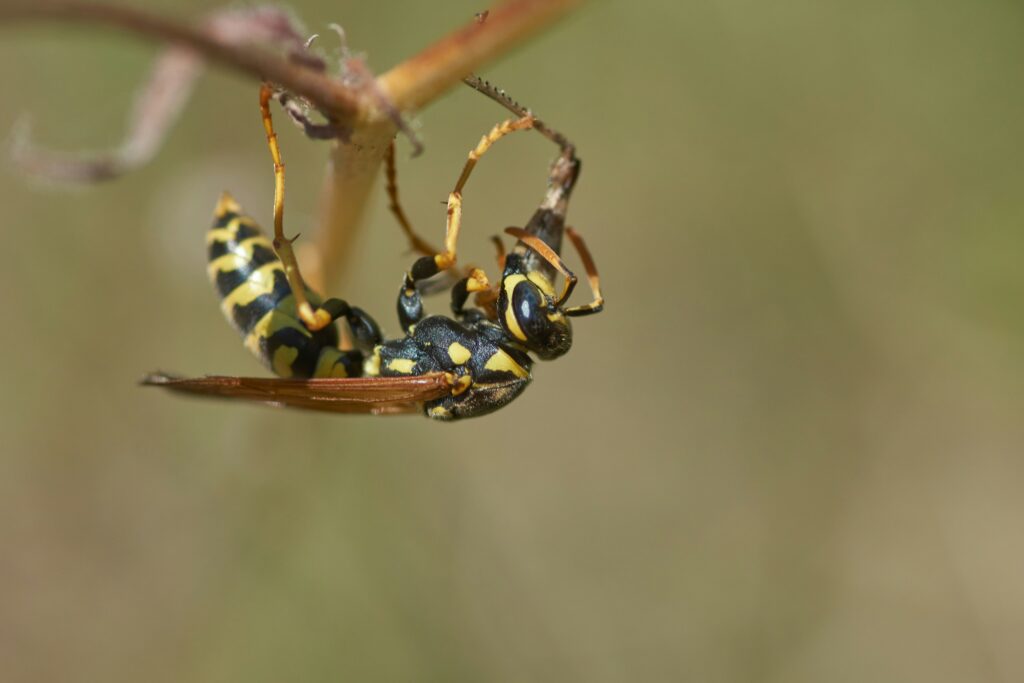
Unlike their more familiar social relatives that build paper nests, most predatory wasp species are solitary hunters that target specific pest insects as food for their developing young. Cicada killer wasps, for instance, paralyze cicadas and place them in underground chambers as food for their larvae, while mud dauber wasps specialize in hunting spiders. Perhaps most valuable to agriculture are the tiny parasitoid wasps like Trichogramma and Braconids, which lay eggs inside pest insects or their eggs, with the developing wasp larvae consuming their hosts from the inside. Some parasitoid wasps are so specialized they target only one pest species, making them ideal for targeted biological control programs in commercial agriculture. These beneficial wasps are often invisible partners in pest management, with their small size (many are smaller than a grain of rice) belying their enormous impact on controlling pest populations.
Antlions: Masters of the Pit Trap
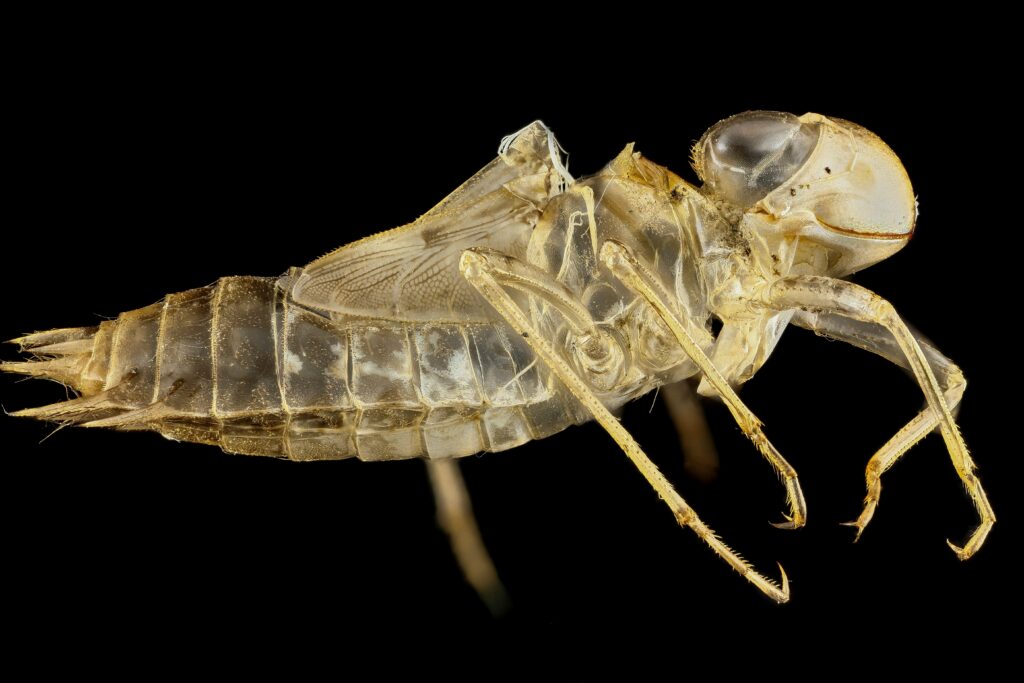
Antlions employ one of the most fascinating hunting strategies in the insect world, with their larvae creating conical pit traps in sandy soil to capture prey. The larvae, sometimes called “doodlebugs” due to the meandering trails they leave while searching for suitable pit locations, dig these funnel-shaped traps by spiraling backward and flicking sand outward with their heads. Once the pit is constructed, the antlion larva buries itself at the bottom with only its large, pincer-like jaws exposed, waiting for ants or other small insects to stumble into the trap. When prey falls in, the loose sand on the steep sides of the pit collapses under their feet, carrying them down to the waiting predator, with the antlion sometimes flicking more sand to hasten their descent. Although their impact on overall pest populations is more limited than some other predatory insects, antlions provide fascinating biological control in dry, sandy habitats where they help manage ant populations.
Rove Beetles: Swift Predators in Disguise

Rove beetles constitute one of the largest families of beetles with over 63,000 species worldwide, many of which serve as important predators in garden ecosystems. These elongated beetles are easily identified by their short wing covers (elytra) that leave most of their flexible abdomen exposed, which they often curl upward scorpion-like when disturbed. Most rove beetles are swift hunters that prey on smaller insects and their larvae in soil, leaf litter, compost, and decaying organic matter. Certain species specialize in controlling specific pests, such as those that feed on fungus gnat larvae in soil and compost, making them valuable allies in greenhouse production. Their small size and cryptic coloration make rove beetles easy to overlook, but their collective impact on soil-dwelling pests makes them important components of healthy garden ecosystems and commercial growing operations.
Creating Habitats for Beneficial Predatory Insects
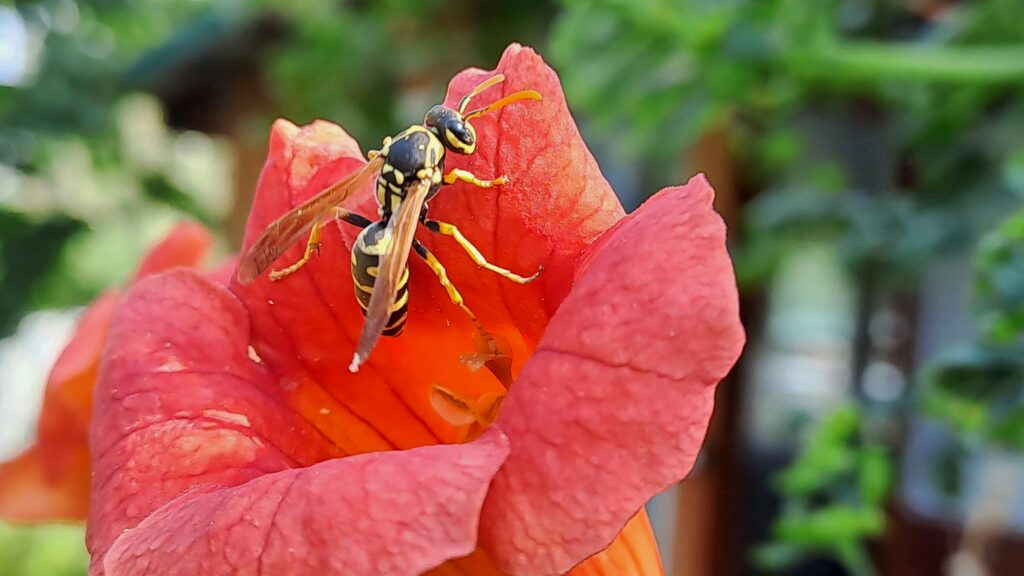
Attracting and retaining predatory insects requires thoughtful garden design that provides food, shelter, and breeding sites throughout the seasons. Diverse plantings that include flowering plants from the aster, carrot, and mint families offer nectar and pollen sources for adult predators like hover flies and parasitoid wasps that need these resources to complete their life cycles. Maintaining areas of undisturbed soil, leaf litter, and perennial plantings provides crucial overwintering habitat for ground beetles, spiders, and other beneficial insects that would otherwise be killed by excessive garden cleanup. Water features support dragonflies and damselflies, while strategic placement of insectary plants like sweet alyssum and buckwheat between crop rows can enhance biological control in vegetable gardens. Perhaps most importantly, eliminating or drastically reducing broad-spectrum pesticide use prevents the unintended killing of beneficial predators, which are often more sensitive to these chemicals than the pests they control.
Harnessing Predatory Insects in Integrated Pest Management
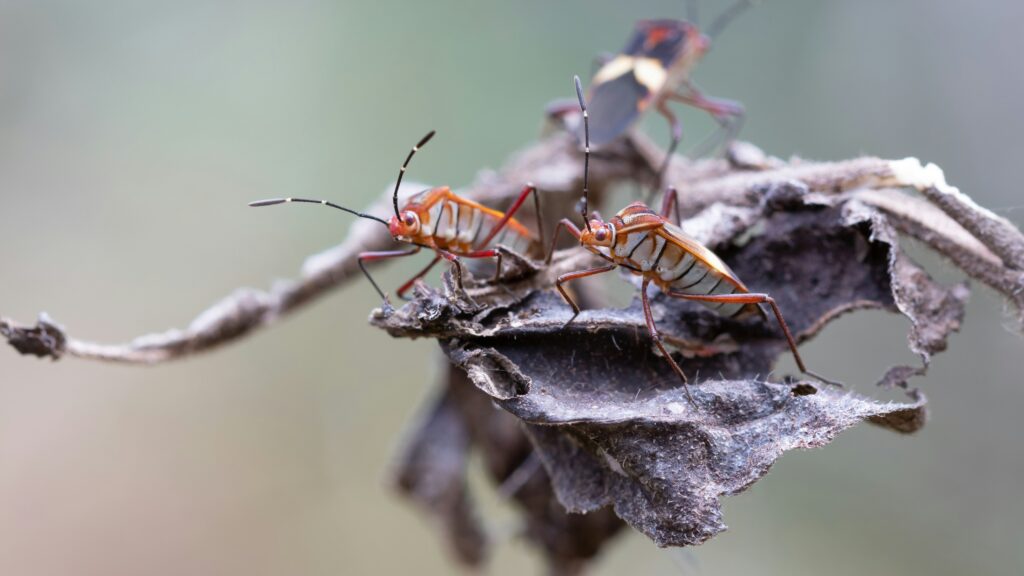
Integrating predatory insects into formal pest management strategies requires understanding both the biology of these beneficial organisms and the ecology of the systems where they operate. Commercial growers increasingly use conservation biological control, which focuses on enhancing habitat for naturally occurring predators, alongside augmentative releases of purchased beneficial insects like ladybugs, lacewings, and predatory mites. Timing these releases correctly is crucial—for instance, introducing predators when pest populations are just beginning to build rather than during full-blown infestations. Selecting complementary predator species that target different pest life stages or operate in different parts of the plant canopy can create more effective control than relying on a single predator type. The most successful integrated pest management programs use predatory insects as part of a broader strategy that includes resistant plant varieties, cultural practices like crop rotation, and carefully targeted, minimally disruptive pesticides only when necessary.

